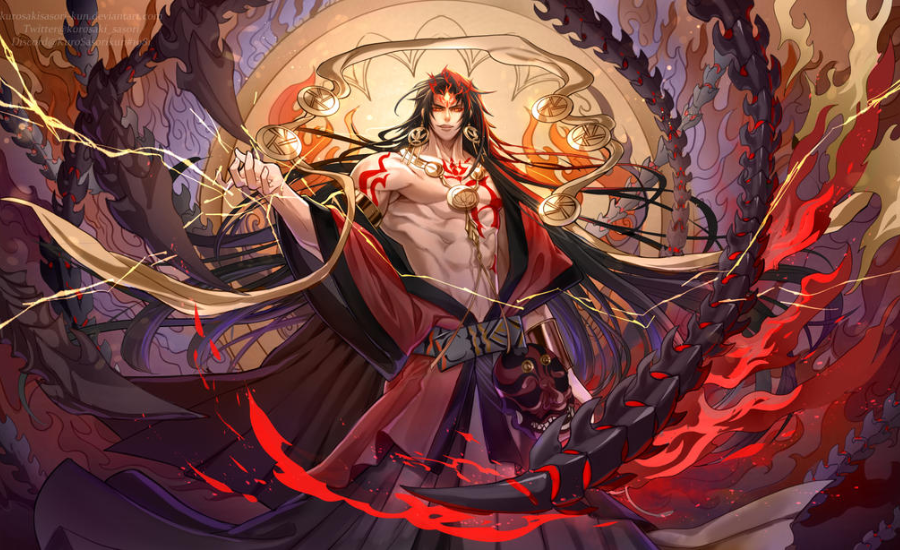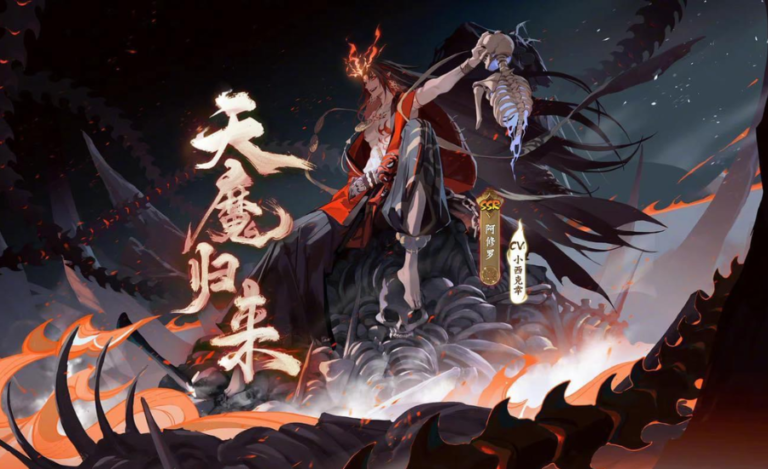Introduction
The word “Asuratoo” may evoke a sense of mystery and intrigue, hinting at an ancient civilization shrouded in myth and legend. While it might not be a term immediately recognized in mainstream history or archaeology, it serves as a gateway to explore a rich tapestry of lore, history, and cultural significance. This article delves into the enigmatic world of Asuratoom, examining its historical context, cultural impact, and the significance of its mythological and archaeological legacy.
The Historical Context of Asuratoon

Asuratoon is often referenced in connection with ancient civilizations and mythologies, blending historical fact with imaginative interpretations. To understand its significance, we must first explore its historical and mythological roots.
- Origins and Early References
The term “Asuratoon” appears in various texts and oral traditions, often linked to ancient Mesopotamian or South Asian cultures. Its origins are somewhat obscure, but some researchers suggest that it might be a variation of “Asura,” a term used in ancient Indian texts to describe powerful and divine beings.
In Hindu mythology, Asuras are considered powerful deities or demons, often in opposition to the Devas (gods). The term “Asuratoon” might be a fusion of this concept with other ancient traditions, creating a complex and multifaceted cultural symbol. - Archaeological Evidence
Archaeological evidence pertaining to Asuratoom is scarce, but there are intriguing finds that hint at its significance. Artifacts such as ancient inscriptions, relics, and ruins have been uncovered in regions historically associated with Mesopotamian and Indian cultures. These findings suggest that Asuratoon might have been a significant cultural or religious entity.
Some scholars propose that Asuratoon could represent a lost city or civilization, possibly mentioned in ancient texts or oral histories. However, concrete evidence linking Asuratoon to a specific historical site remains elusive.
Cultural Impact and Mythological Significance

The mythological and cultural impact of Asuratoon is significant, reflecting its role in shaping ancient beliefs and traditions. This section explores the various ways in which Asuratoon has influenced cultural narratives and religious practices.
- Mythological Narratives
Asuratoon is often depicted as a powerful and mystical force in ancient myths and legends. In some accounts, it is portrayed as a realm of gods or supernatural beings, holding great significance in the cosmic order. These narratives highlight the duality of Asuratoon as both a source of divine power and a realm of enigmatic mysteries.
The stories surrounding Asuratoon often involve epic battles, divine interventions, and cosmic struggles. These myths served to explain natural phenomena, social order, and the moral framework of ancient societies. - Religious and Spiritual Significance
The spiritual significance of Asuratoon can be traced to its association with divine beings and cosmic forces. In some traditions, Asuratoon is considered a realm where gods and goddesses reside, influencing the natural world and human affairs.
Rituals and ceremonies dedicated to Asuratoon might have been performed to appease or invoke these divine beings. These practices reflect the deep-seated belief in the interconnectedness of the divine and earthly realms, emphasizing the importance of maintaining harmony between them. - Influence on Ancient Art and Literature
The cultural impact of Asuratoon is evident in ancient art and literature. Artistic depictions of Asuratoon often feature elaborate symbols, motifs, and iconography, reflecting its significance in religious and cultural contexts.
Literature from ancient civilizations may contain references to Asuratoon, portraying it as a central element in epic tales and historical chronicles. These literary works offer valuable insights into the beliefs and values of ancient societies.
Exploring the Legacy of Asuratoom

The legacy of Asuratoon extends beyond its mythological and cultural significance. This section examines the ways in which Asuratoon has influenced modern understanding and interpretation of ancient civilizations.
- Scholarly Research and Interpretations
Modern scholars and researchers have explored the concept of Asuratoon through various lenses, including archaeology, anthropology, and comparative mythology. These studies aim to uncover the historical and cultural context of Asuratoon, shedding light on its origins and significance.
While concrete evidence remains limited, researchers continue to analyze ancient texts, inscriptions, and artifacts to piece together the puzzle of Asuratoon. This ongoing research contributes to a deeper understanding of ancient civilizations and their complex belief systems. - Popular Culture and Modern Interpretations
Asuratoon has captured the imagination of contemporary audiences, appearing in literature, film, and other forms of popular culture. Modern interpretations often blend historical facts with speculative fiction, creating a captivating narrative that bridges the gap between ancient myths and contemporary storytelling.
Popular media representations of Asuratoon often explore themes of cosmic battles, divine realms, and mystical powers. These portrayals contribute to the enduring fascination with Asuratoon and its place in the collective imagination. - The Search for Lost Civilizations
The concept of Asuratoon aligns with broader themes of lost civilizations and ancient mysteries. The search for such civilizations continues to captivate historians, archaeologists, and enthusiasts alike. The idea of Asuratoon as a lost city or cultural entity adds to the allure of discovering hidden aspects of human history.
The quest for Asuratoon reflects a broader desire to understand the mysteries of the past and connect with the rich tapestry of human heritage. This search inspires exploration, research, and a deeper appreciation for the complexities of ancient civilizations.
You May Also Like To Read: Gang-busters-rule-8th-edition-warhammer
Conclusion
Asuratoon represents a fascinating blend of history, mythology, and cultural significance. While concrete evidence of its existence remains elusive, the concept of Asuratoon offers valuable insights into ancient beliefs, rituals, and artistic expressions. Its impact on mythological narratives, religious practices, and popular culture highlights the enduring allure of ancient mysteries and the quest to uncover the secrets of the past.
The legacy of Asuratoon serves as a testament to the rich tapestry of human imagination and the ongoing pursuit of knowledge. As we continue to explore the mysteries of ancient civilizations, Asuratoon stands as a symbol of the profound connection between the divine and the earthly, inviting us to delve deeper into the enigmatic realms of our collective heritage.
FAQs about Asuratoon
1. What is Asuratoon?
Asuratoon is a term that evokes mystery and intrigue, often associated with ancient civilizations and mythologies. It is thought to represent a significant cultural or religious entity from ancient times, possibly linked to the concept of “Asura” in Hindu mythology, which describes powerful and divine beings.
2. Where does the term “Asuratoon” come from?
The term “Asuratoon” appears in various ancient texts and oral traditions, with possible connections to Mesopotamian and South Asian cultures. Some researchers suggest it might be a variation or fusion of the term “Asura,” a concept in Hindu mythology referring to powerful deities or demons.
3. What archaeological evidence supports the existence of Asuratoon?
Concrete archaeological evidence for Asuratoon is scarce. However, some ancient inscriptions, relics, and ruins discovered in regions historically associated with Mesopotamian and Indian cultures hint at its significance. Despite these finds, no definitive evidence links Asuratoon to a specific historical site or civilization.
4. How is Asuratoon depicted in mythology?
In mythology, Asuratoon is often portrayed as a powerful and mystical force. It may be depicted as a realm of gods or supernatural beings with significant cosmic importance. The myths surrounding Asuratoon involve epic battles, divine interventions, and cosmic struggles, reflecting its dual nature as both a source of divine power and a realm of enigmatic mysteries.
5. What was the spiritual significance of Asuratoon?
Asuratoon holds spiritual significance as a realm associated with divine beings and cosmic forces. It is believed to be a place where gods and goddesses reside, influencing both the natural world and human affairs. Rituals and ceremonies might have been performed to honor or invoke these divine entities, highlighting the belief in the interconnectedness of the divine and earthly realms.
6. How has Asuratoon influenced ancient art and literature?
Asuratoon has impacted ancient art and literature by featuring elaborate symbols, motifs, and iconography in artistic depictions. References to Asuratoon in ancient texts and literature often place it as a central element in epic tales and historical chronicles, providing insights into the beliefs and values of ancient societies.
7. What is the modern scholarly perspective on Asuratoon?
Modern scholars approach Asuratoon through various lenses, including archaeology, anthropology, and comparative mythology. Research aims to uncover its historical and cultural context, though concrete evidence remains limited. Ongoing studies of ancient texts, inscriptions, and artifacts contribute to a deeper understanding of Asuratoon and ancient civilizations.
8. How has Asuratoon been represented in popular culture?
In contemporary popular culture, Asuratoon appears in literature, film, and other media, often blending historical facts with speculative fiction. These representations explore themes of cosmic battles, divine realms, and mystical powers, reflecting the enduring fascination with Asuratoon and its role in modern storytelling.
9. What role does Asuratoon play in the search for lost civilizations?
Asuratoon fits into broader themes of lost civilizations and ancient mysteries. The idea of Asuratoon as a lost city or cultural entity adds to the allure of discovering hidden aspects of human history. This concept fuels exploration and research, contributing to a deeper appreciation of ancient civilizations and their complexities.
10. Why is the concept of Asuratoon important?
The concept of Asuratoon is important because it represents a fascinating blend of history, mythology, and cultural significance. It provides valuable insights into ancient beliefs, rituals, and artistic expressions. The enduring allure of Asuratoon highlights the quest to uncover the secrets of the past and connect with our collective heritage.
Read Now: Essential Discover.





